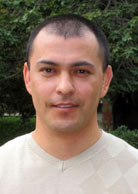Suppressing a newly identified protein involved in regulating cell division could be a novel strategy for fighting certain cancers because it stops the malignant cells from dividing and causes them to die quickly, according to a study by researchers at UCLA’s Jonsson Comprehensive Cancer Center.
During the five-year study, designed to seek new targets for anti-cancer therapies, researchers discovered that depleting the protein, called STARD9, also helped the commonly used chemotherapy drug Taxol work more effectively against certain cancers.
Depletion of the protein did not work against all cancers, but it did show potential to be an effective way to battle certain types of melanoma and non–small-cell lung cancers, said the study’s first author, Jorge Torres, a UCLA professor of chemistry and biochemistry and a Jonsson Cancer Center researcher.
“Biology and metabolism are different in cancer cells, and check points that regulate normal cells are often misregulated in cancer, allowing the malignant cells to divide uncontrollably,” Torres said. “Because of that, we set out to discover new cancer targets and, more specifically, proteins critical for cancer cell division that we could potentially target with therapeutics.”
About the video: This is a cancer cell with depleted STARD9 in which the chromosomes are being pulled apart and the DNA is tearing, after which the cell dies.
The study appeared last week in the peer-reviewed journal Cell.
During division, cells form a microtubule-based mitotic spindle, a highly specialized and dynamic structure that aids in proper and equal chromosome transmission to the daughter cells, Torres said. One approach in the treatment of cancer has been to target microtubule dynamics or spindle assembly itself.
Torres and his team sought to identify and characterize proteins necessary for spindle assembly and therefore vital to cell division. They performed a high-throughput proteomic screen to find proteins associated with the spindle and uncovered 592 of them. It was unclear, however, if all the proteins were necessary for proper spindle function.
Next, they performed a high-throughput genetic screen that knocked the proteins out one by one to see how that affected spindle function in the cells. They were looking for depletion of a protein that stopped cancer cell division and prompted the cells to die quickly.
“The idea was to find something that arrested the cells while they were trying to divide and injured them in such a way that cell death occurred quickly,” Torres said. “We were looking for a way to attack the cancer cells as they were dividing.”
From the screens, Torres and his team selected the most promising protein, whose depletion best interrupted cell division and resulted in the cells dying quickly. This was STARD9, a kinesin-like protein — a sort of molecular motor — that functions to form a stable mitotic spindle.
Torres said there are some cancer clinical trials testing kinesin inhibitors, but so far, they have not proved very successful. The inhibitors do stop cell division, but they don’t damage the cell enough to induce a quick cell death, and eventually the cells begin dividing again.
STARD9, however, not only arrests cells during division, it causes so much disruption in spindle formation and function that the cells die quickly. The cells, in effect, become too broken to repair themselves, Torres said.
“When STARD9 is depleted in the cancer cells, the chromosomes attempt to align for transmission into the daughter cells but fail,” he said. “They try for a while, but the chromosomes are being pulled apart from different directions and the DNA is tearing. In the end, their DNA condenses into a ball, and the cells die.”
Torres said researchers knew that STARD9 existed in cells from computational analyses, but no one had characterized its function until now.
The next step will be to confirm these findings in animal models by injecting mice with cancer cells and determining if depletion of STARD9 in these cells suppresses the formation of a tumor.
Torres is currently screening small molecules to find the ones that effectively inhibit STARD9’s function. He’s also conducting a molecular analysis of the protein and how it functions to form a proper spindle.
Finding a good STARD9 inhibitor could result in a new, less toxic combination therapy for certain cancers. Because depletion of the protein enhances the effectiveness of Taxol, Torres hypothesized that perhaps the chemotherapy drug, which causes many serious side effects, could be given in lower doses but perform just as well if used in combination with a STARD9 inhibitor.
“Our study highlights the utility of performing focused screens to understand cellular processes, as many of the genes we have identified as regulating mitosis (cell division) and apoptosis (cell death) were not identified in pervious genome-wide screens,” the study states.
The study was funded in part by the National Institutes of Health, Genentech, the Leukemia and Lymphoma Society, and the V Foundation for Cancer Research.
– By Kim Irwin
*Source: University of California

